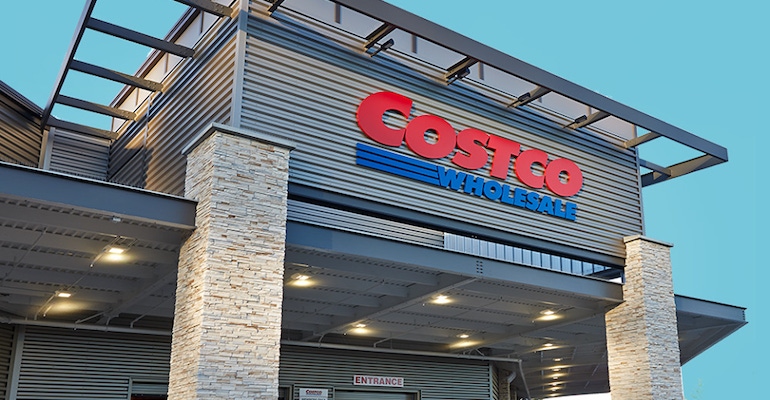Costco Wholesale upholds comp-sales momentum in MarchCostco Wholesale upholds comp-sales momentum in March
Growth stays at double digits after cycling pandemic-driven gains a year ago
April 8, 2021

A year after COVID-19 was declared a national emergency, Costco Wholesale posted double-digit sales gains for March, despite declines in grocery and sundries categories.
For the five weeks ended April 4, net sales climbed 17.6% to $18.21 billion from $15.49 billion a year earlier, Issaquah, Wash.-based Costco reported after yesterday’s market close.
In the year-to-date period, covering 31 weeks, net sales totaled $111.37 billion, up 15.7% from $96.25 billion a year ago.
Comparable-club sales in the March selling period rose 16% overall and were up 11.1% excluding the impact of changes in fuel prices and foreign exchange (FX) rates. By business unit, comp sales advanced 13.9% in the United States (11.3% excluding fuel and FX), 28.3% in Canada (13% excluding fuel and FX) and 16.4% internationally (7.7% excluding fuel and FX). E-commerce sales surged 57.7% on a comparable basis (54.5% excluding FX).
In its U.S. clubs, Costco maintained double-digit comp sales growth from March 2020, which covered a chunk of the consumer panic-buying period of the pandemic, when members loaded up on food and groceries and other essential supplies. The retailer’s U.S. comp sales increased 10.7% (12.1% excluding fuel and FX) for the five weeks ended April 5, 2020.
“Our comp traffic, or frequency, for March was up 3.3% worldwide and up 3% in the U.S.,” David Sherwood, assistant vice president of finance and investor relations at Costco, said in a conference call late Wednesday. “This year’s five-week retail month of March had one fewer shopping day versus last year due to the calendar shift of Easter. This negatively impacted total and comparable sales, as well as traffic, by approximately 1.5% to 2%. Worldwide, the average transaction was up 12.3%, which included positive impacts of 220 basis points from gasoline inflation and 270 basis points from FX.”
U.S. regions seeing the strongest sales increases in March were the Southeast, Texas and Midwest, while internationally Japan, Korea and the United Kingdom turned in the top performances, according to Sherwood.
In core merchandise categories, comp-sales results exclude the positive impact of FX and “reflect significant impact from the onset of COVID a year ago,” he noted. “Food and sundries were negative high single digits. Fresh foods were up mid-single digits; better-performing departments included service deli and bakery. Nonfoods were positive in the mid-50s; better-performing departments included sporting goods, garden, toys and seasonal, jewelry, home furnishings and domestics. As their businesses were up mid-30s, gasoline, hearing aids and optical were the primary drivers.”
Costco finished the period with 807 warehouse clubs overall, compared with 787 a year earlier. By market, the retailer operates 559 clubs in the U.S. (including Puerto Rico), 104 in Canada, 39 in Mexico, 29 in the United Kingdom, 28 in Japan, 16 in Korea, 14 in Taiwan, 12 in Australia, three in Spain and one each in Iceland, France and China. Costco also has e-commerce sites in the U.S., Canada, the U.K., Mexico, Korea, Taiwan, Japan and Australia.
Read more about:
CostcoAbout the Author
You May Also Like






